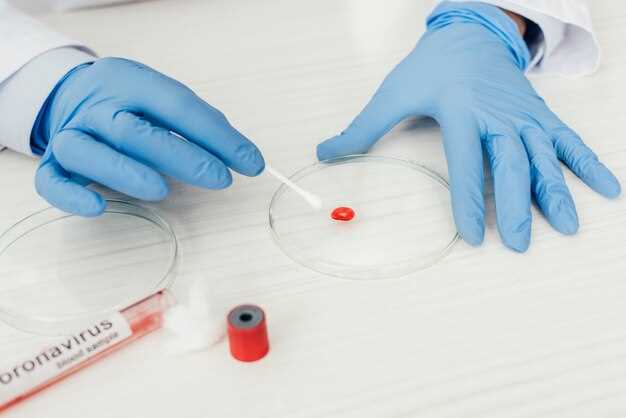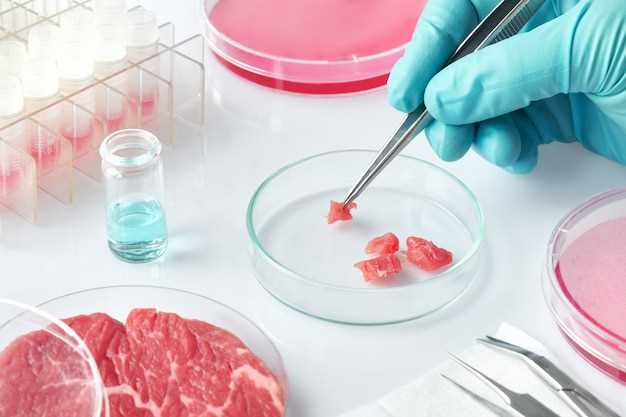
Discover the fascinating clinical interactions between rosuvastatin and p-gp, and how they can impact your health.
Rosuvastatin, a commonly prescribed medication for managing high cholesterol levels, belongs to the class of drugs called statins. It works by inhibiting an enzyme in the liver that is responsible for producing cholesterol. By reducing cholesterol levels, rosuvastatin helps to lower the risk of cardiovascular diseases, such as heart attack and stroke.
However, it is essential to understand the role of p-glycoprotein (p-gp), a protein present in the cells lining the intestines and the blood-brain barrier, in the absorption and distribution of rosuvastatin.
P-gp acts as a gatekeeper, regulating the absorption and distribution of various drugs in the body. It plays a crucial role in determining the effectiveness and potential side effects of medications.
P-gp: Function and importance in drug interactions

P-glycoprotein (P-gp) is a type of protein that plays a crucial role in the absorption, distribution, and elimination of various drugs in the body. It is one of the key transporters responsible for the efflux of drugs from cells, particularly from the intestine and blood-brain barrier.
The main function of P-gp is to protect the body from potentially harmful substances by pumping them out of cells and preventing their accumulation. This efflux pump mechanism contributes to the low systemic exposure and limited toxicity of certain drugs.
P-gp is expressed in various tissues, including the small intestine, liver, kidneys, blood-brain barrier, placenta, and tumor cells. Its presence in the intestinal epithelial cells is of particular importance because it can affect the absorption and oral bioavailability of drugs.
Drug interactions involving P-gp can significantly influence the pharmacokinetics and efficacy of medications. When a drug is a substrate of P-gp, its interaction with this transporter can affect its absorption, distribution, metabolism, and elimination.
For example, when a drug is a P-gp substrate, co-administration with a P-gp inhibitor can increase its systemic exposure by inhibiting its efflux from cells. Conversely, co-administration with a P-gp inducer can decrease its systemic exposure by increasing its efflux from cells.
Understanding the role of P-gp in drug interactions is essential for optimizing therapy and minimizing the risk of adverse effects. Healthcare professionals should consider the potential for P-gp-mediated drug interactions when prescribing medications, particularly those that are substrates, inhibitors, or inducers of P-gp.
| P-gp Substrates | P-gp Inhibitors | P-gp Inducers |
|---|---|---|
| Atorvastatin | Verapamil | Rifampin |
| Digoxin | Quinidine | Cyclosporine |
| Loperamide | Ketoconazole | Carbamazepine |
By recognizing the potential interactions between P-gp and specific drugs, healthcare professionals can make informed decisions to ensure safe and effective therapy.
Interaction between Rosuvastatin and P-gp

P-gp, also known as P-glycoprotein, is a transporter protein that plays a crucial role in the absorption, distribution, and elimination of various drugs in the body. It is primarily expressed in the epithelial cells lining the gut, liver, and kidney, as well as in the blood-brain barrier. P-gp functions as an efflux pump, actively pumping drugs out of cells and limiting their absorption or distribution to target tissues.
Rosuvastatin, a widely prescribed statin medication, is known to be a substrate of P-gp. This means that it relies on P-gp to be transported across cell membranes and to reach its site of action. When rosuvastatin enters the gut for absorption, P-gp limits its uptake, reducing its bioavailability. The same mechanism occurs in the liver and kidney, where P-gp prevents rosuvastatin from entering hepatocytes and renal tubular cells, respectively.
This interaction between rosuvastatin and P-gp has important implications for its clinical use and potential drug interactions. Co-administration of drugs that inhibit P-gp, such as cyclosporine or ritonavir, can increase the plasma concentration of rosuvastatin. This can lead to an increased risk of adverse effects, such as myopathy or liver toxicity. On the other hand, drugs that induce P-gp, such as rifampin or St. John’s wort, can decrease the plasma concentration of rosuvastatin, potentially reducing its efficacy.
Clinical Implications
Understanding the interaction between rosuvastatin and P-gp is crucial for healthcare professionals to ensure the safe and effective use of this medication. They need to consider potential drug interactions when prescribing or co-administering drugs that affect P-gp activity. The dose of rosuvastatin may need to be adjusted based on the specific drug interaction and the patient’s individual characteristics.
Recommendations for Coadministration
When prescribing rosuvastatin, healthcare professionals should carefully review the patient’s medication history to identify potential drug interactions. They should consider the use of alternative medications or adjust the doses if necessary. Patients should also be educated about the importance of adhering to their prescribed treatment and reporting any adverse effects or changes in medication regimen. Regular monitoring of liver function and muscle enzymes is recommended when co-administering drugs that affect P-gp activity.
Interaction between rosuvastatin and p-gp
Rosuvastatin is a substrate of P-glycoprotein (p-gp), a transmembrane protein that plays a crucial role in the transportation of drugs across cell membranes. P-gp is found in various tissues, including the liver, kidney, intestine, and blood-brain barrier.
The interaction between rosuvastatin and p-gp can affect the pharmacokinetics of the drug. When rosuvastatin is administered concomitantly with p-gp inhibitors, such as cyclosporine or erythromycin, the exposure and plasma concentration of rosuvastatin may increase due to the inhibition of p-gp-mediated efflux.
On the other hand, p-gp inducers, such as rifampicin or St. John’s wort, can decrease the plasma concentration of rosuvastatin by increasing its efflux from cells. This might lead to a reduced therapeutic effect of rosuvastatin.
It is important to note that the interaction between rosuvastatin and p-gp is bidirectional, meaning that p-gp can both increase and decrease the plasma concentration of rosuvastatin depending on whether it is inhibited or induced.
Understanding the interaction between rosuvastatin and p-gp is crucial in clinical practice. Healthcare professionals should be cautious when prescribing rosuvastatin to patients who are also taking medications that are known p-gp inhibitors or inducers. Dose adjustments may be necessary to ensure the optimal therapeutic effect of rosuvastatin.
Clinical implications and recommendations for coadministration
When considering the clinical implications of the interaction between rosuvastatin and p-gp, it is important to evaluate the potential impact on drug efficacy, safety, and patient outcomes. The inhibition of p-gp by rosuvastatin can lead to increased absorption and decreased elimination of concomitant medications that are substrates of p-gp. This may result in higher plasma concentrations and increased risk of adverse drug reactions.
It is recommended to closely monitor patients for signs of drug toxicity or increased therapeutic effect when coadministering rosuvastatin with drugs that are known substrates of p-gp. Dosage adjustments may be necessary to maintain therapeutic efficacy and minimize the risk of adverse events.
In addition, considering the mechanism of action of rosuvastatin, it is important to evaluate the patient’s lipid profile and any potential drug-drug interactions that may affect the metabolism or elimination of rosuvastatin. This includes coadministered medications that may inhibit or induce the activity of CYP enzymes involved in rosuvastatin metabolism.
Based on the available evidence, it is prudent to avoid the concurrent administration of rosuvastatin with drugs that are strong inhibitors or inducers of p-gp. This will help minimize the potential for drug-drug interactions and optimize therapeutic outcomes.
| Recommendations for coadministration: |
|---|
| 1. Assess the patient’s concomitant medications for potential interactions with rosuvastatin and p-gp. |
| 2. Monitor patients closely for signs of drug toxicity or therapeutic failure when initiating or adjusting therapy with rosuvastatin. |
| 3. Consider dose adjustments of rosuvastatin or coadministered medications based on clinical response and monitoring of lipid profiles. |
| 4. Educate patients about potential drug-drug interactions and the importance of adhering to prescribed medication regimens. |
| 5. Consult with a healthcare professional or pharmacist for specific recommendations and guidance in managing drug interactions. |
Overall, understanding the clinical implications and implementing appropriate recommendations for coadministration of rosuvastatin and drugs that are substrates of p-gp is crucial for optimizing therapeutic outcomes and ensuring patient safety.
